THE COOKBOOK TEST #0081: YOUR HOME IZAKAYA
INSTALLMENT #0081 (FREE) A SINGLE-RECIPE AMUSE BOUCHE
Dear Readers,
I had a rough week, I'm not going to lie. Amid all the frivolous financial and civilizational collapse I also caught a cold that sidelined me for days. You forget how much day-to-day miscellany is involved in parenting until you can't do it anymore and things - bills, dishes, cardboard, tumbleweeds composed mostly of cat fur - stack up.
In summary: I came dangerously close to binning it this week and not doing an update. But to hell with that - I'm relentless, I'm unstoppable, I'm at the very least going to cough up a single interesting recipe on my way to giving you a full accounting of a very interesting book.
The book is YOUR HOME IZAKAYA by Tim Anderson. If you've been reading The Cookbook Test for a while, you might remember that I reviewed (and really enjoyed) another book by the same author, entitled JAPANEASY BOWLS AND BENTO.
As long as I've got your attention I'll level my most serious complaint against Mr. Anderson - it was true for Japaneasy and it's true for Your Home Izakaya (which claims, on its cover, to contain "Fun and Simple" recipes).
Here it is: These recipes are not really all that simple. It's not unusual for recipes in Your Home Izakaya to have 15-20 ingredients, build up flavor in layers over the course of many steps, and park you in the kitchen for a long time. I appreciate the importance of luring the inexperienced chef, but I also like truth in labeling and think many of these recipes are moderately difficult.
That's as harsh as I can get with this guy, though. The book is absolutely beautiful and a joy to read, and as you'll see in a moment, the single (reasonably) easy recipe that I was able to execute while half-alive came out quite nicely.
at your service,
James
YOUR HOME IZAKAYA
BY TIM ANDERSON
HARDIE GRANT BOOKS | 2020 | $35
The author of Your Home Izakaya is in fact the proprietor of a two-location ramen izakaya restaurant in Great Britain called Nanban. That plus winning MasterChef in 2011 and spending serious time in Japan digging into food culture contributes to the depth of his reliable and well-informed voice.
He takes some pains to let readers know that his recipes in Your Home Izakaya involve fusion and shouldn't be taken as authoritative, but he certainly doesn't seem to be phoning it in - his stuff is detailed and thoughtful and much more concerned with getting clearly defined flavor profiles than cutting corners.
And while Izakaya food is, by definition, "bar food," the proximity of these recipes to the rituals of hanging out and drinking doesn't dumb them down, at least by American pop cultural standards. If you look at a dish like Spring Onion Tuna Tartare Rice Bowl or one like Nasu Dengaku Three Ways, it's hard to find parallels with buffalo chicken wings or cracker crust pizza. But there's a shared lineage, and that's "let's hang out, let's tip back a few frosty ones, and let's munch up while we do it."
Everything looks sumptuous - the photography of Your Home Izakaya is superb, and riffing through its pages I found myself excited by the thought of making and eating just about anything in the book.
I ended up going with a recipe that looked, if possible, just half a notch more lovely than everything else.
YOUR HOME AVOCADO SASHIMI
Avocado Sashimi with Guacamole Garnishes is one of those not-exactly-traditional recipes that the author warns us about in the book's introductions, and maybe that's what drew me to it - he introduces it like so:
If you think this sounds like an obnoxious fusion recipe from 20 years ago, you are not wrong, but consider this: it's really tasty! And in an izakaya, that's kind of all that matters.
A man after my own heart. I go for tasty. I love tasty. I live for tasty.
The method is pretty straightforward: you're mostly slicing and arranging complementary bits. It involves a neat trick (soaking and ice cubing raw onion to crisp it up and mellow it out) and involves a smart combination of extremes: soft and crunchy, spicy and buttery, tart and mellow, herbal and fiery.
The finished salad was just terrific - really refreshing and delicious, and also strikingly gorgeous. I can absolutely imagine myself scaling it up and plating it as an appetizer for a dinner party and freaking knocking people's socks off. And while my plating abilities are limited, the naturally photogenic quality of the recipe meant that I still had something that looked pretty dazzling on the plate.
My only intentional change to the original recipe was changing 1/2 garlic clove to a full one. First, what the heck am I supposed to do with an extra 1/2 garlic clove? Second, when has including more garlic ever been a problem? (Yes, I'm a garlic-ophile, as are many serious food people.)
My only unintentional change was not having a jalapeño on hand, and using little bits of habanero to substitute. It worked out fine except for one mouthful that zapped Becca pretty good. Sorry, Becca.
AVOCADO SASHIMI WITH GUACAMOLE GARNISHES
1/8 red onion
1 tomato
1 garlic clove, minced
2 Tbsp ponzu
1/2 tsp sesame oil
1 pinch of salt
1 avocado
1/4 jalapeño, very thinly sliced
10-12 cilantro leaves, picked
Slice the onion as thinly as you can and cover with cold water plus an ice cube. Scorch your tomato (a broiler works) until the skin is blackened. Remove the skin, core the tomato, and dice the flesh. Combine (along with any juices) with garlic, ponzu, sesame oil, and salt.
Cut the avocado in half (lengthwise), remove the stone, and scoop out the two pieces of flesh. Slice into 6-8 pieces per half.
Arrange the slices on a plate, spoon over the tomato ponzu mixture, drain the onions and place on top with the jalapeño slices and cilantro leaves.
A SECOND FREAKING RECIPE
Alright, fine, I can't let it go with just one recipe. Oh my God, I've already written 1,100 words, I may as well just do this week as a full freaking installment. "Cut yourself slack!" I said to myself. "Take an easy week!" I said. "Just do one recipe, then do the other one next week, goof around a little!"
People think that by working for yourself you get out of having noxious bosses who keep driving you to do more stuff, but that's just wishful thinking.
Anyhoodles. I went with a slightly more involved recipe for my second tour with the book, a Japanese dish by way of schnitzel and spagBol (and maybe India?). Chicken Katsu Curry Spaghetti is deceptively simple ... maybe it's deceptively complex? I guess I never figured that out. It looks simple, but it's actually kind of complex. Whatever that would be.
Deceptively complex, I think. The issue is this: You're not using a jarred or powdered curry sauce, you're building it up from scratch. That means 20 minutes of sauteing onions, followed by spice and ingredient dumps, making a roux, and immersion blending all your saucy goodness into something texturally appropriate.
And that's only half the battle - you also need to flour and season and egg and bread a bunch of chicken thighs, and then fry them up before resting them and slicing them up to top your curry-sauced pasta. None of this felt "simple" or "easy" but it did feel fun - I put on some Sun Ra and drank a coffee Negroni with a really big ice cube and made a late afternoon of it.
So, it's a process. But it's an enjoyable process - the closest it gets to stressful is pan-frying your chicken, but all you have to do is keep an eye on it and manage the temperature. And the result is pretty delicious - rich, deeply flavored, silky curry sauce that coats your pasta and complements your crispy crunchy chicken slices. The original recipe called for spaghetti, and I would use spaghetti if I made this in the future, but I was stuck with whatever pasta was sitting around in the pantry and that worked out just fine.
At any rate, this is a solid recipe - really rich and flavorful, and it leaves you with a fair bit of bonus homemade curry sauce that you can successfully throw onto just about whatever protein and rice situation you can concoct.
CHICKEN KATSU CURRY SPAGHETTI
For the Sauce
2 Tbsp oil
1/2 onion roughly chopped
1/2 inch piece of ginger root, peeled and finely chopped
2 garlic cloves, chopped
1 tomato, roughly chopped
1/2 banana, cut into discs
2 Tbsp mild Madras curry powder
1 Tbsp garam masala or Middle Eastern spice blend
2 Tbsp butter
3 Tbsp flour
1 1/2 cups chicken or beef stock
1 Tbsp ketchup
1 Tbsp soy sauce
1 Tbsp Worcestershire sauce
salt, to taste
For the Chicken
2 chicken thighs, boneless
salt and pepper to taste
2 Tbsp flour
1 egg, beaten with a splash of milk and 1 Tbsp vegetable oil
3/4 cup panko breadcrumbs
oil, for shallow-frying
1 small onion cut into 8 wedges
200 g (7 oz.) dried spaghetti or other pasta
Heat the oil and chopped onion in a deep saucepan over medium-low for about 20 minutes, stirring frequently, until onions have browned evenly. Add ginger, garlic, tomato, banana, and spices and cook for 5 minutes, stirring often. Add butter and let it melt into the mixture. Add the flour and cook for 5 minutes, stirring well. Pour in the stock, ketchup, soy sauce, and Worcestershire sauce, increase heat to medium-high, and bring to a high simmer for 5 minutes, stirring well and scraping the bottom of the pan. Remove from heat and puree with a blender or immersion blender until very smooth. Taste and season with salt if needed.
Season chicken thighs well with salt and pepper, then dredge in flour. Coat them in the beaten egg mixture, allowing them to soak for a minute. Coat chicken with panko. Heat 1/4 inch of oil in a large frying pan over a medium heat. Add the onion and fry until soft and lightly browned, about 8 minutes. Remove onion with slotted spoon and stir it into the curry sauce. Lay the breaded chicken in the oil and cook for 5-6 minutes per side until golden.
Bring the sauce back to a low simmer and bring a large pan of water to a rolling boil, aiming to have your pasta done just after the chicken. Cook pasta until al dente as per directions (usually 8-11 minutes). When chicken is cooked, remove from oil, drain on wire rack or paper towels, and rest briefly. Transfer pasta to large bowl and pour over about half the sauce, then slice the chicken and place on top.
YOUR HOME IZAKAYA
(***BUY IT*** / BORROW IT / SKIP IT / SCRAP IT)
Like me, author Tim Anderson is a native Madisonian who, despite Wisconsin's dramatic distance and difference from Japan, fell in love with the country from afar. Unlike me, he actually did something about it, moved to Japan, became deeply immersed in the food and culture, and opened a couple of credible Japanese restaurants. Tim Anderson: 1, Me: 0. I'm not saying that I'm going to love every book he writes, but he's two for two, and I'm guessing he's going to maintain that trend - he's a sharp, witty, effective writer, a serious recipe-smith, and able to put together a real firecracker of a book. Your Home Izakaya is a beautifully wrought volume with a ton of appealing recipes, and I would recommend it, cook from it again, and give it as a gift. Five stars, no real notes, if this looks appealing to you by all means go out and get it from your local independent bookstore just as soon as you can.



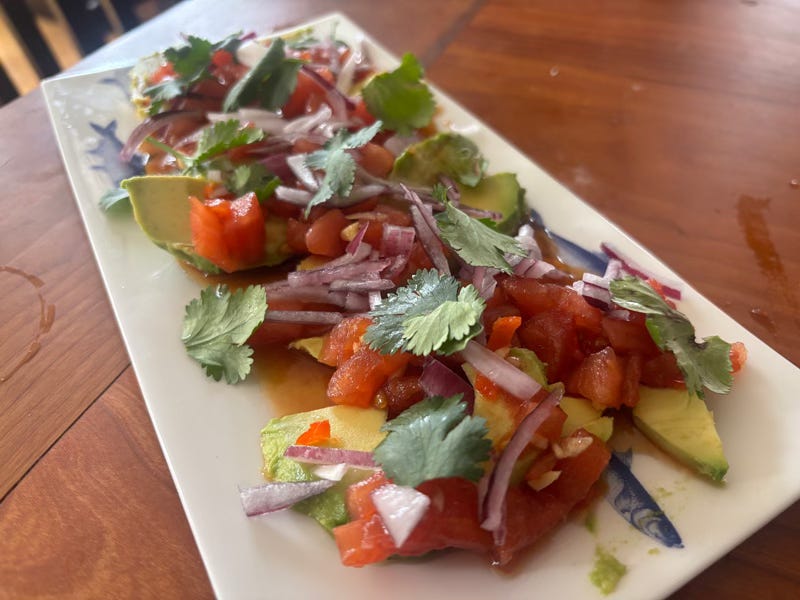
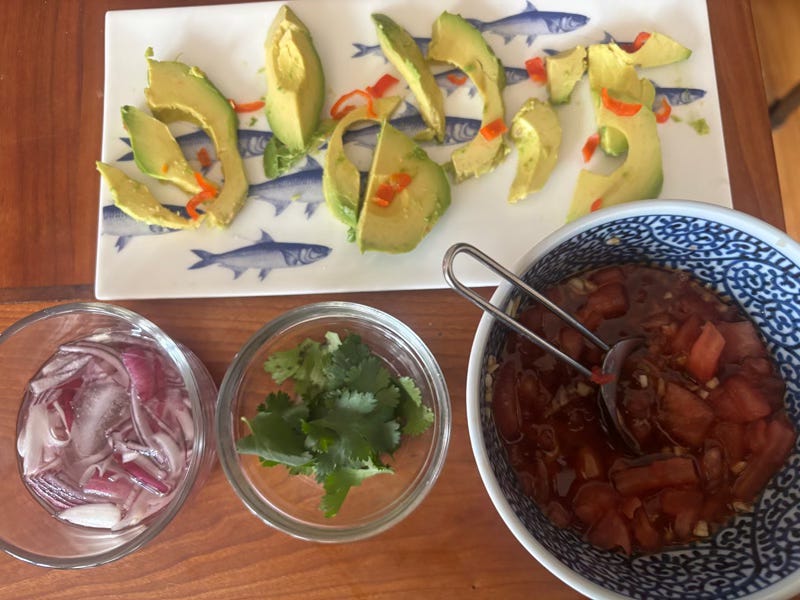
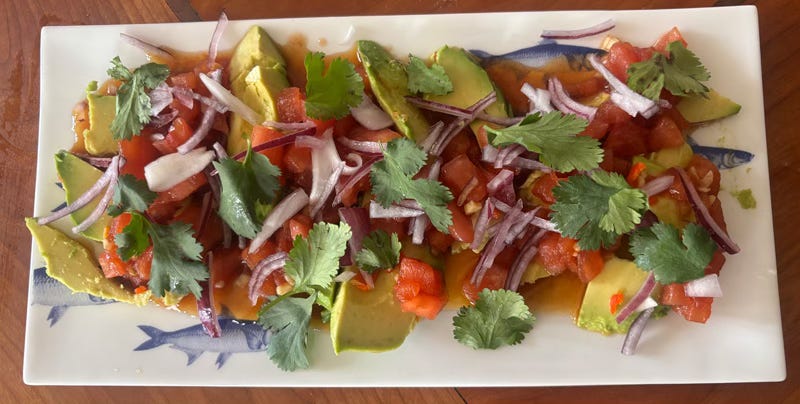
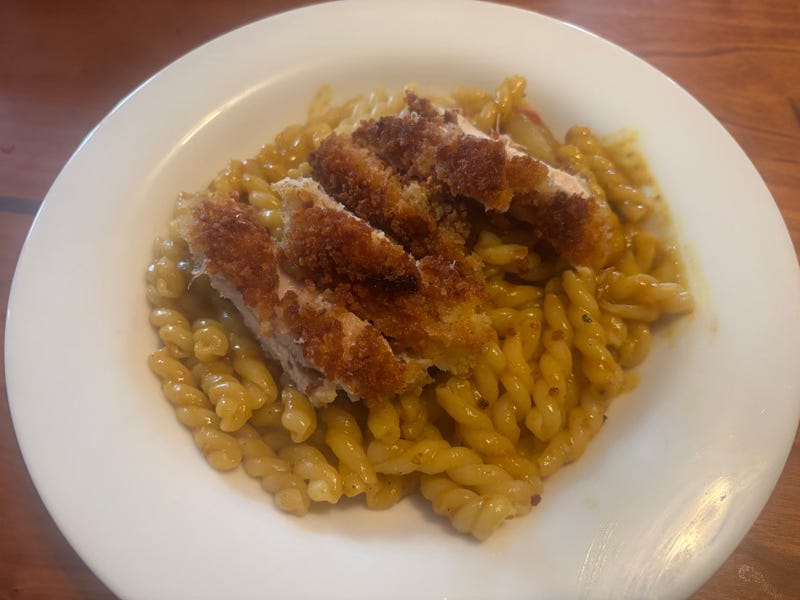
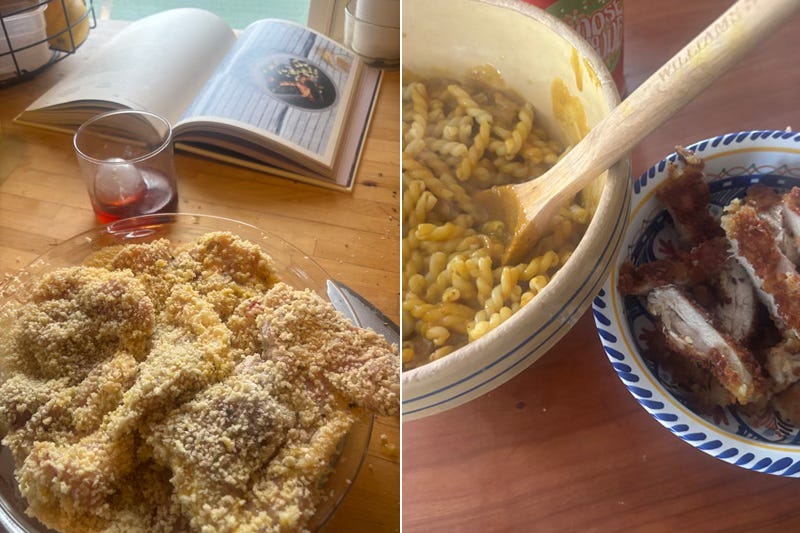
Homemade curry base is an interesting twist one does not usually see. Even Mourimoto recommends spicing up pre-made curry. Thanks for sharing.